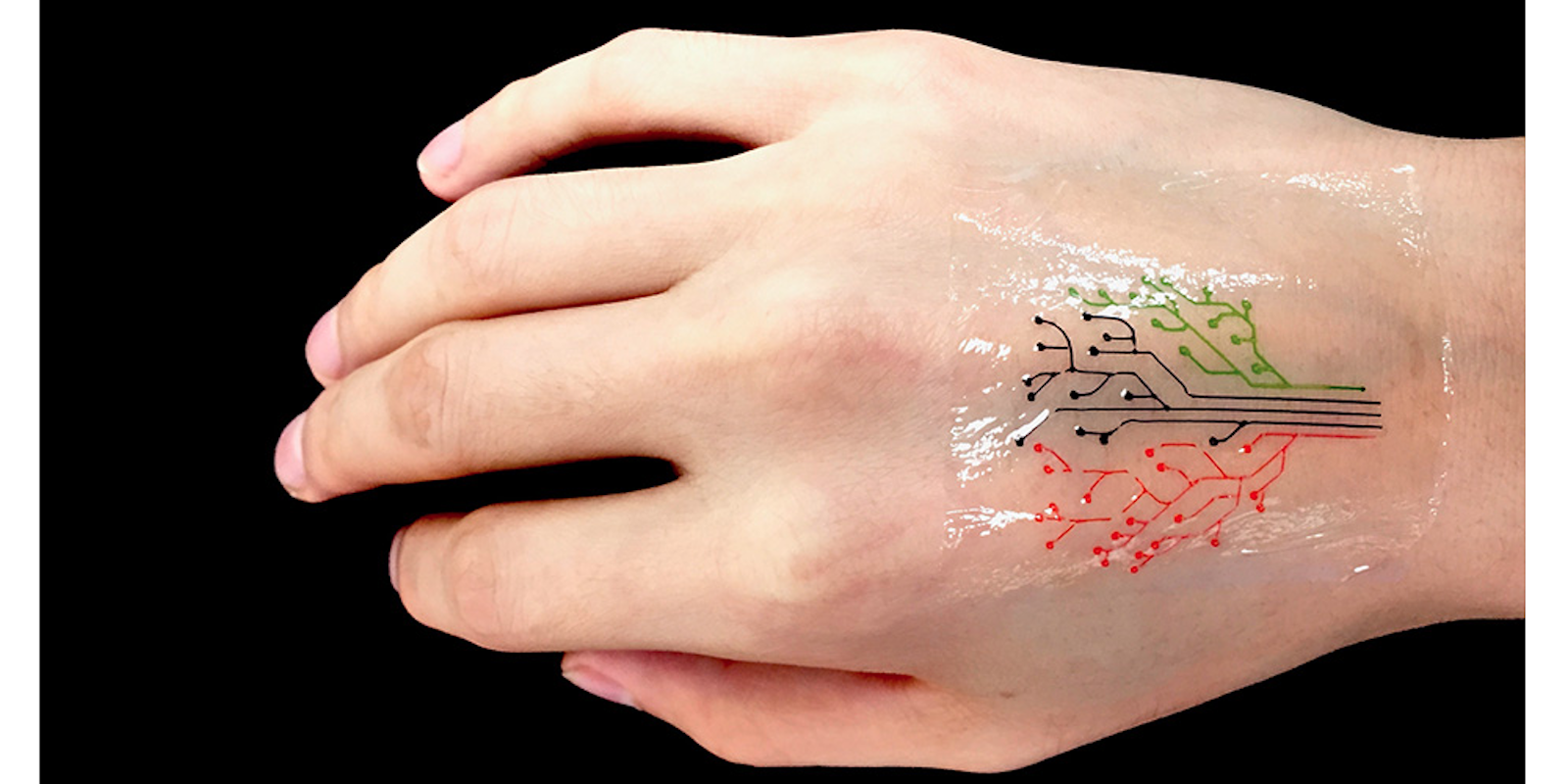Bulky, electronics-filled wearables are on the out. MIT researchers have developed a new kind of “living tattoo” that could be used in place of today’s wearable sensors and touch displays.
The tattoo, 3D-printed using genetically programmed bacterial cells, can light up when it detects various environmental stimuli. The researchers tested their technique by printing out a thin living tattoo shaped like a tree. The tree’s branches are sensitive to different chemical stimuli. When those are detected, the branches light up. The bacterial cells within, suspended in a gel-like mixture of hydrogels and nutrients, can respond to things such as pollutants, pH levels, and temperature changes.
As seen in their tree-shaped proof-of-concept, the engineers can use this technique in flexible, wearable stickers and patches, when this bacterial mixture is printed and cured on a layer of stretchy elastomer. However, it could also be implemented in pills, or in surgical implants. In treating conditions such as diabetes or hypoglycemia, for example, such an implant could release glucose, helping to keep blood sugar levels from dipping too low.
“We can use bacterial cells like workers in a 3-D factory,” said graduate student Xinyue Liu. Liu is a member of the research team and a co-auther of its paper published in Advanced Materials this week.
We’ve seen developments similar to this before. Earlier this year, Harvard and MIT researchers worked together to create biosensitive tattoo ink that can detect various conditions, such as whether you’re dehydrated or have low blood sugar. Another variant, TechTats, would give you wearable-style data stats but painted on your skin much like a henna tattoo.
For MIT’s team, one challenge was finding a type of cell strong enough to handle the stresses of 3D printing. Mammal cells were too sensitive, but bacteria cells, which have stronger cell walls, proved ideal. The team used a customized 3D printer to print out its living ink.
In the future, this 3D-printing technique could be used to develop an entire living computer composed of cells that communicate with one another, much like the components inside a microchip. This could be the beginning of the end for the transistor—at least in wearable health devices.
H/T MIT News


